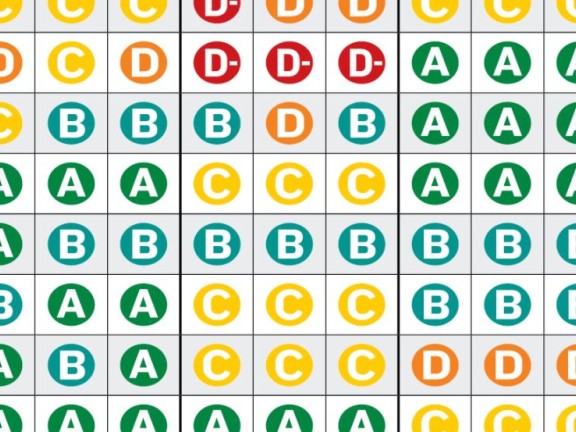Volcker Alliance Releases 50 Individual State Budget Report Cards

The Volcker Alliance today released report cards grading and evaluating key budgeting and transparency practices in each of the fifty US states. Following the Alliance’s November 2017 study, Truth and Integrity in State Budgeting: What is the Reality? the team further distilled their findings to create digestible and visually compelling report cards designed for use by a wide range of digital audiences.
All fifty report cards, which are now accessible through an interactive map, include grades on each state’s critical budget practices plus a detailed breakdown of the assessments. The tailored insights will be valuable tools to help elected officials, investors, policy advocates, and citizens determine and improve their state’s fiscal governance and sustainability.
William Glasgall, senior vice president and director of the Volcker Alliance’s state and local initiatives, said, “While many states follow admirable procedures to balance their budgets, the report cards show that every state has room for improvement. Indeed, the report cards demonstrate the need for transparent and sustainable fiscal practices, especially in the funding of pensions and retiree health care benefits, as well as in the provision and governance of financial reserves. It is our hope that this tool can help to prompt thoughtful debate and support meaningful improvements in state budgeting practices.”
The report cards are the result of a multi-year study Mr. Glasgall led in partnership with more than fifty public finance and budgeting professors and students at eleven US schools of public administration or public policy from coast to coast. The report cards provide the full array of grades the Volcker Alliance gave to each state from fiscal 2015 through 2017. The grades are based on five areas of best practices the Volcker Alliance has defined to be necessary for accurate, sustainable, and transparent budgeting:
- Budget Forecasting: States should use a multi-year, consensus approach to establishing single, binding estimates for revenues and expenditures before the budgeting process begins.
- Budget Maneuvers: States should pay for expenditures in the same year they were accrued and avoid deferring them into the future.
- Legacy Costs: States should consistently contribute to pension funds and health care benefits for retirees the amounts that actuaries determine to be necessary.
- Reserve Funds: States should enact clear policies for withdrawals from rainy day and other fiscal reserves, as well as rules for replenishing spent funds and tying the size of fund balances to revenue volatility.
- Transparency: States should have consolidated budget websites that provide one point of access to all information about a state’s budget, including the state’s budgeting practices, tax expenditures, and infrastructure replacement and debt service costs.
Each report card contains a summary highlighting the state’s most effective procedures as well as those that fall short. In addition, each guide presents a table that compares that state’s three-year average grade in each of the five budget categories with those of other states in its region, as defined by the US Census Bureau. The descriptive text and comparative data give practitioners, advocates, and citizens context for the ratings in their state as well as the opportunity to better understand shared successes and challenges with neighboring states.
In his preface to Truth and Integrity in State Budgeting: What is the Reality?, Paul A. Volcker, Chairman of the Volcker Alliance and former Federal Reserve Board Chairman, said that the work shows the “importance of clear and comprehensible budgets to inform citizens, promote responsible policymaking, and improve fiscal stability.”
Access to each state’s report card is available through a clickable map on the webpage for the Volcker Alliance’s report Truth and Integrity in State Budgeting: What is the Reality?


